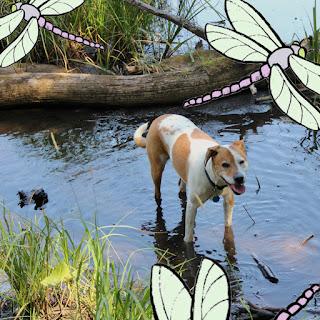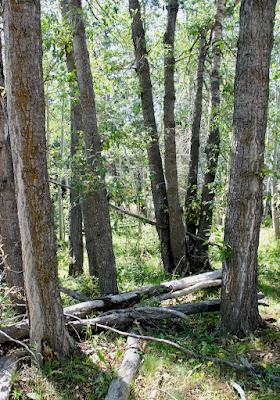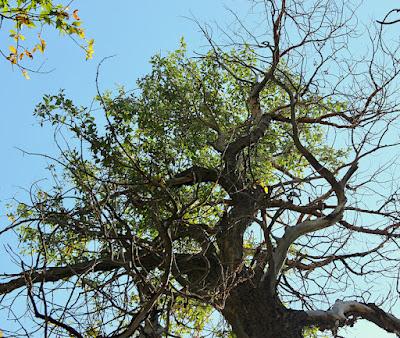
"Trees are our silent partners, sensing us as we move about, providing shelter, offering us beauty, and nurturing and protecting the earth." —the Tree Library
It was another unseasonably warm day—a good time to visit the balsam poplars along Pole Creek in the Laramie Mountains. But it was 80º F even at 8200 ft elevation! So we hiked in and out via the shady trail instead of doing the usual loop. En route I heard crashing in the drainage bottom and spotted a moose ... or rather parts of a moose running off through trees and brush. Sorry, no photos.
Among the poplars it was quite pleasant—shady and cool enough to hang out with the tree I'm following.
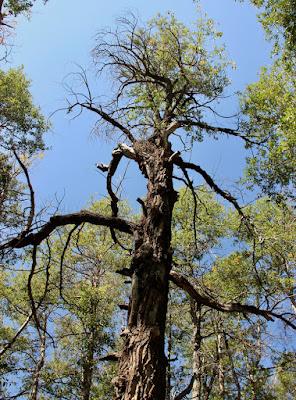
Balsam poplar—Populus balsamifera.
This is obviously the oldest tree in the stand. Its canopy is much reduced and the large branches below are dead and leafless. The trunk is twisted, not straight like those of its companions (or offspring?).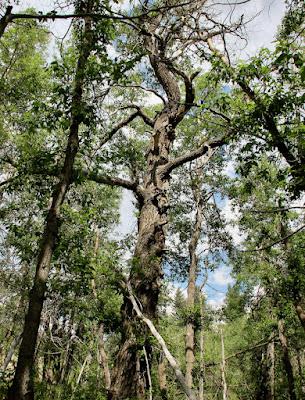
(this photo is from last month)
Neighboring poplars are smaller, straight, and often clustered.
In my readings (US Forest Service), I learned that balsam poplar is an early seral species, adept at establishing after disturbance. For one thing, it's very good at vegetative reproduction, "capable of regenerating from root suckers, stump sprouts, stem sprouts, and buried branches". And the root suckers are large and vigorous, more vigorous than those of aspen even.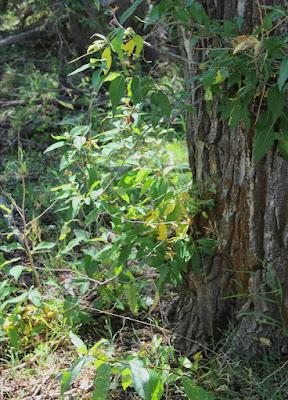
Vigorous stem and root suckers at base of the old poplar.
Balsam poplar bark is smooth and light gray to grayish brown on young trees, becoming furrowed with age. The old poplar's bark is much more furrowed than that of its neighbors.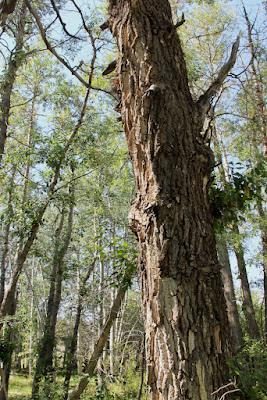
Dare I speculate about the history of this stand? Currently we see one old balsam poplar with branches sawn off even high up on the trunk (more about this here), surrounded by younger trees that look roughly similar in age. The stand is expanding—young poplars are invading the meadow to the west (photo below), where there is an old well box. The sunny trail immediately north of the stand is the old Happy Jack Road. So ... was this a nice flat area next to the road, with water, where people camped and collected wood for their fires? Or maybe Happy Jack himself lived here. More research needed.
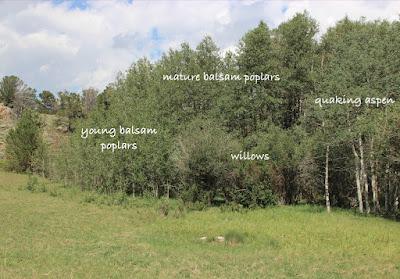
(another photo from last month)
Before returning to the trailhead, we took a short side trip to "Carboniferous Pond" to cool off. There are no cycads, giant horsetails, seed ferns, and such. But dragonflies are so abundant that it feels carboniferous.
